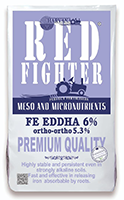Grape Growing Guide

Site Selection for Grape Vines
Light: Full Sun
Soil: Prefer a deep, acidic (low pH 5.0-6.5), well drained, sandy soil, but they tolerate a wide range of soil types except alkaline and wet. Organic matter content should range between 4-5 percent, but a highly fertile soil is not recommended. If the soil is too fertile, the vine grows too fast and doesn't bear well. If possible, do a soil test and amend the soil before planting.
Pollination: Self-Pollinating
Orientation: North-south rows maximize sun exposure. Northeast-southeast rows reduce sunburn problems in warm climates. The vines need full sun, because sunlight plays a major part in fruit sugar development. North-south rows maximize sun exposure. Northeast-southeast rows reduce sunburn problems in warm climates.
Other important considerations: Grape vines have a large leaf surface and are susceptible to fungal diseases. Good air circulation is important. Grapes like to be planted on a slope to help keep air moving and to prevent frost from settling. The best slope is to the east or southeast, but a south or southwest slope is also good. Planting parallel to prevailing winds increases air circulation. Protect from severe wind.
How to Plant Grape Vines
For best results, plant your grape vines in the spring. Once your plants arrive, plant them immediately. If you cannot plant immediately, keep new arrivals cool and roots moist. To keep cool, it is recommended that you store in refrigerator or cool place.
Keep new arrivals cool and roots moist. Rehydrate the roots by soaking in water for a few hours just before planting, Have your vine supports in place before planting. You can use a stake if no other support is available. Dig a wide, deep hole, so roots can be spread out completely. Cut off broken roots. Plant at the same depth as in the nursery, 6'-8' apart. Insert the stake carefully, so you do not injure the roots. Right after planting, prune back to the best cane with 2-3 healthy, living, fat buds (nodes). After the danger of spring frost is over and shoot growth begins, remove all but two of the strongest shoots. Remove all the flower clusters this first growing season. The goal in the first year is to establish the plant with strong roots and a straight trunk. Water after planting.
For best results plant your grape vines in early spring. Once your plants arrive plant them immediately. If you can’t plant immediately keep new arrivals cool and roots moist.
Preferred nutrition forms, amounts and timing
The grapevine is not very demanding in this respect. The following points should, however, be borne in mind:
- Excessive N may adversely affect quality in vineyards producing for fine wines. Other cases of low nitrogen regime are non-irrigated plots, cold climate with short growth season, areas producing for early fresh market.
- Medium nitrogen requirement cases are for general wine production, and for dried fruit.
- High nitrogen requiring areas are found where the produce uses for fresh as well as for dried fruit market.
- N should be best applied as an overall dressing in late winter or in spring.
- On clay soils with dry climates P2O5 and K2O are worked into the soil during the winter dormant period. On light soils with a wet climate, they may be topdressed together with the N.
- Relatively little phosphorous is removed in the fruit. Adequate levels of this element, are, therefor easily met by banding SSP once every several years.
- Potassium can be applied in a sulphate form in ordinary conditions. Potassium nitrate is the fertilizer of choice in case of saline soils or water, and for heavy applications e.g. 500-1000 Kg/Ha K2O.
- Vines respond best to potassium when applied via drip system (fertigation), between March and June (northern hemisphere) or September-December (southern hemisphere). The best technique is to apply 103 Kg/Ha of potassium nitrate four times during this season.
- Excessive potassium may adversely affect quality in vineyards producing for fine wines.





